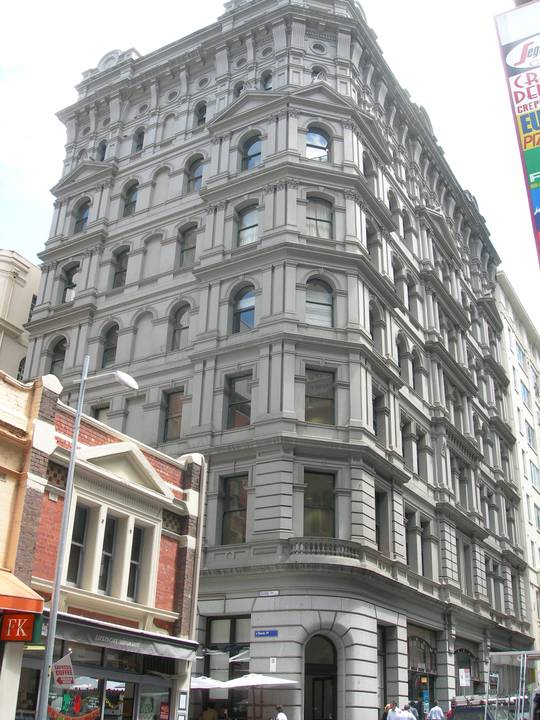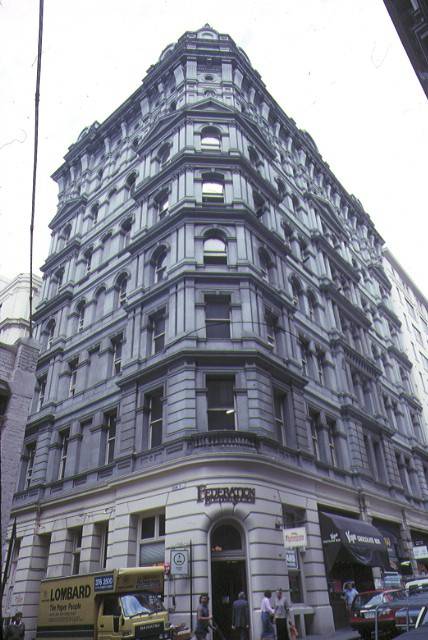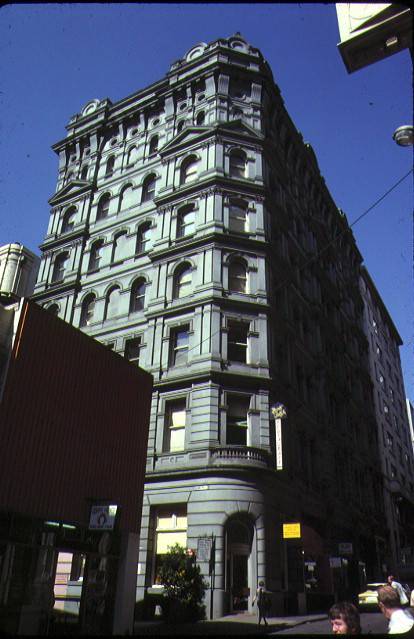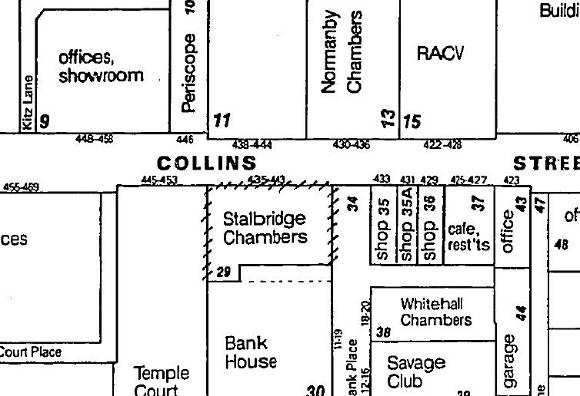| Back to search results » | Back to search page » |
|
STALBRIDGE CHAMBERS
Other NameSTALLBRIDGE CHAMBERS Location435-443 LITTLE COLLINS STREET MELBOURNE, MELBOURNE CITY
File Number602831LevelRegistered |
|
Statement of Significance
What is significant? Stalbridge Chambers was built in 1890-1891 for R C Brown to the design of architects Twentyman & Askew. Brown was the president of the Buildings and Contractors' Association, and his company were responsible for the construction of the building. The new nine storey building, including a basement, replaced the Waterloo Hotel. It was speculatively built to attract tenancies. It incorporated a hotel bar and shops on the ground floor with office space above. The construction is brick with facing Harcourt granite to the ground floor and render above. The floors are a composite construction of concrete and timber supported by cast iron columns and steel joists. Internally the entrance lobby and stairs are particularly notable. Stylistically the building is an example of Mannerist design, incorporating a free use of elements of Renaissance architecture, such as pilasters, pediments, Doric and Corinthian orders, round arch windows and bold rustication at the ground floor level. The exaggerated cornice at attic storey level is supported by masculine, fluted brackets. Alterations to the shop fronts were carried out in 1929 and 1954. How is it significant? Stalbridge Chambers is of architectural significance to the State of Victoria. Why is it significant? Stalbridge Chambers is architecturally significant as an intact example of a richly decorated, boom-period Mannerist design by the noted Melbourne architects Twentyman & Askew. Twentyman and Askew were also responsible for another Mannerist design, the Block Arcade. As the product of the owner-builder R C Brown, the building epitomises the speculative nature of the early 1890s period and, with its combination of hotel, shops, professional chambers and offices, it is an early example of multi-use development. It is a rare example of an unpainted stuccoed high-rise building of the 1890s. The building represents the technological transition in the 1890s, whereby lifts enabled extra storeys and therefore extra rental revenue, but traditional load-bearing brick construction still restricted the overall height of the structure.
Group
Commercial
Category
Commercial Office/Building







